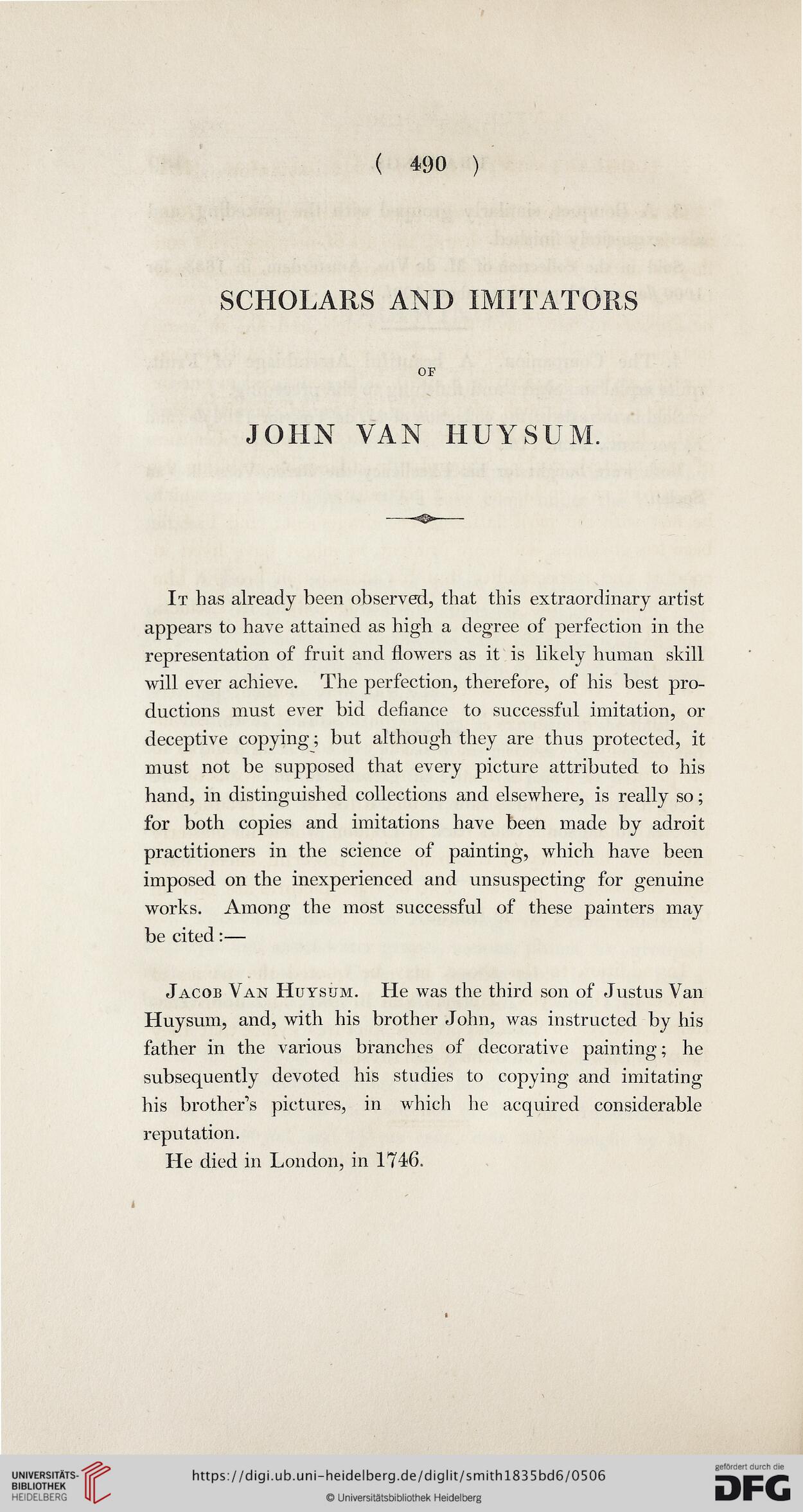( 490 )
SCHOLARS AND IMITATORS
OF
JOHN VAN HUYSUM.
It has already been observed, that this extraordinary artist
appears to have attained as high a degree of perfection in the
representation of fruit and ssowers as it is likely human skill
will ever achieve. The perfection, therefore, of his best pro-
ductions must ever bid defiance to successful imitation, or
deceptive copying; but although they are thus protected, it
must not be supposed that every picture attributed to his
hand, in distinguished collections and elsewhere, is really so;
for both copies and imitations have been made by adroit
practitioners in the science of painting, which have been
imposed on the inexperienced and unsuspecting for genuine
works. Among the most successful of these painters may
be cited:—
Jacob Van Huysum. He was the third son of Justus Van
Huysum, and, with his brother John, was instructed by his
father in the various branches of decorative painting; he
subsequently devoted his studies to copying and imitating
his brother’s pictures, in which he acquired considerable
reputation.
He died in London, in 1746.
SCHOLARS AND IMITATORS
OF
JOHN VAN HUYSUM.
It has already been observed, that this extraordinary artist
appears to have attained as high a degree of perfection in the
representation of fruit and ssowers as it is likely human skill
will ever achieve. The perfection, therefore, of his best pro-
ductions must ever bid defiance to successful imitation, or
deceptive copying; but although they are thus protected, it
must not be supposed that every picture attributed to his
hand, in distinguished collections and elsewhere, is really so;
for both copies and imitations have been made by adroit
practitioners in the science of painting, which have been
imposed on the inexperienced and unsuspecting for genuine
works. Among the most successful of these painters may
be cited:—
Jacob Van Huysum. He was the third son of Justus Van
Huysum, and, with his brother John, was instructed by his
father in the various branches of decorative painting; he
subsequently devoted his studies to copying and imitating
his brother’s pictures, in which he acquired considerable
reputation.
He died in London, in 1746.




